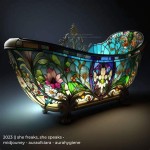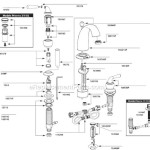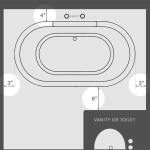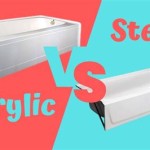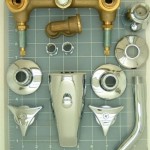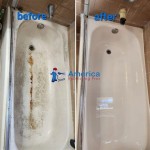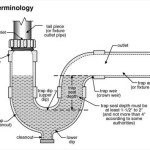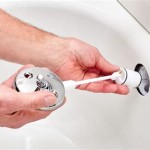Stand-Alone Bathtub Taps Replacement Parts List
A stand-alone bathtub tap is a crucial component of any bathroom, offering a stylish and functional way to control water flow for a relaxing soak. However, over time, these taps may experience wear and tear, requiring replacements for specific parts. Understanding the common replacement parts for stand-alone bathtub taps can help homeowners troubleshoot issues and ensure optimal functionality. This article provides a comprehensive list of essential replacement parts, focusing on their functions and common reasons for needing replacement.
1. Cartridges or Valves
The heart of any bathtub tap is the cartridge or valve, responsible for regulating water flow and temperature. These components can be single-handle or dual-handle, depending on the tap design. Cartridges typically consist of a ceramic disc mechanism that controls water flow, while valves utilize a rubber or metal washer to achieve the same function. Over time, these components can wear out, leading to issues such as:
- Leaky faucets
- Difficulty controlling water flow
- Inability to maintain desired water temperature
Replacement cartridges or valves are readily available from plumbing supply stores and online retailers. They are typically specific to the brand and model of the faucet. The process of replacing these components can vary, but generally involves removing the handle, accessing the cartridge or valve, and installing the new component.
2. Spout and Aerator
The spout is the part of the faucet that directs the water stream towards the bathtub. It may be a fixed or adjustable spout, depending on the design. The aerator, attached to the end of the spout, mixes air with the water to create a smoother and more efficient flow. Common reasons for replacing these components include:
- Clogged or worn-out aerator leading to a weak or uneven water stream
- Damaged spout causing leaks or drips
- Desired change in water stream pattern or flow rate
Replacement spouts and aerators are widely available and can be chosen based on aesthetic preferences and functionality needs. The replacement process typically involves unscrewing the old spout and aerator, and then screwing on the new ones. However, some spouts might require special tools or techniques for removal and installation.
3. Handles and Lever
Handles or levers are the external components that control the water flow and temperature. These can be made of various materials, such as metal, ceramic, or plastic. Overuse, wear and tear, or accidental damage can cause issues with the handles:
- Loose or broken handles
- Difficulty turning the handles
- Damaged or worn-out handle finishes
Replacement handles are available in various styles and finishes to match the existing faucet design. The process of replacing them involves removing the old handles, often with a special tool or screwdriver, and then attaching the new ones. The process can differ depending on the specific faucet design, so consulting the manufacturer's instructions is crucial.
4. O-Rings and Washers
O-rings and washers are small rubber or plastic components that create seals within the faucet mechanism. These tiny parts play a crucial role in stopping leaks and ensuring a smooth water flow. Over time, they can wear out or become damaged, leading to leaks or drips. Replacing these components is often a quick and easy fix for minor leaks:
- Leaky faucets
- Dripping water from the spout or handle
Replacement O-rings and washers are readily available and can be found at plumbing stores or online. The process of replacing them typically involves disassembling the faucet partially, removing the worn-out components, and installing the new ones. It's important to choose the correct size and material for the replacement parts to ensure proper sealing.
5. Pipe Connectors and Fittings
Pipe connectors and fittings connect the faucet to the water supply lines. These components can be made of metal, plastic, or a combination of both. They can experience wear and tear over time, leading to leaks or restricted water flow. In such cases, replacing these components is essential:
- Leaky connections between the faucet and water supply
- Restricted water flow due to clogged or damaged connectors
Replacement pipe connectors and fittings are widely available and can be chosen according to the specific requirements of the faucet and plumbing system. The process of replacing them typically involves disconnecting the affected component, carefully removing it, and then installing the new one securely.
In summary, understanding the common replacement parts for stand-alone bathtub taps can help homeowners troubleshoot issues and ensure optimal functionality. From cartridges and valves to spouts and aerators, handles, O-rings and washers, and pipe connectors, replacing these parts can ensure a smooth and leak-free bathing experience. It's important to consult the manufacturer's instructions or seek professional help if any doubts arise regarding the replacement process.

Sunrise Specialty Diagrams The Sink Factory

Single Handle Freestanding Tub Faucet With 1 75 Gpm 6 L Min Hand Shower

Floor Tub Spout With Diverter Boyel Living Finish Brushed Nickel

Sunrise Specialty Diagrams The Sink Factory

Casainc Single Handle Classical Freestanding Bathtub Faucet With Hand Shower

Brass Black Chrome Stand Single Handle Free Standing Bath Tub Tap Shower Bathtub Floor Mounted Faucet Bestsuppliers Com

4 Hole 2 Handle Deck Mount Roman Tub Faucet With 0 Gpm Hand Shower

Boyel Living Freestanding Floor Mount Double Handle Bath Tub Filler Faucet With Water Supply Lines In Gunmetal Gray

Brushed Nickel Pfister R15 407k 2 Handle Roman Tub Trim Kit Faucets

Chicago Pressure Balancing Tub Shower Valve W Trim Parts Breakdown Kullysupply Com

